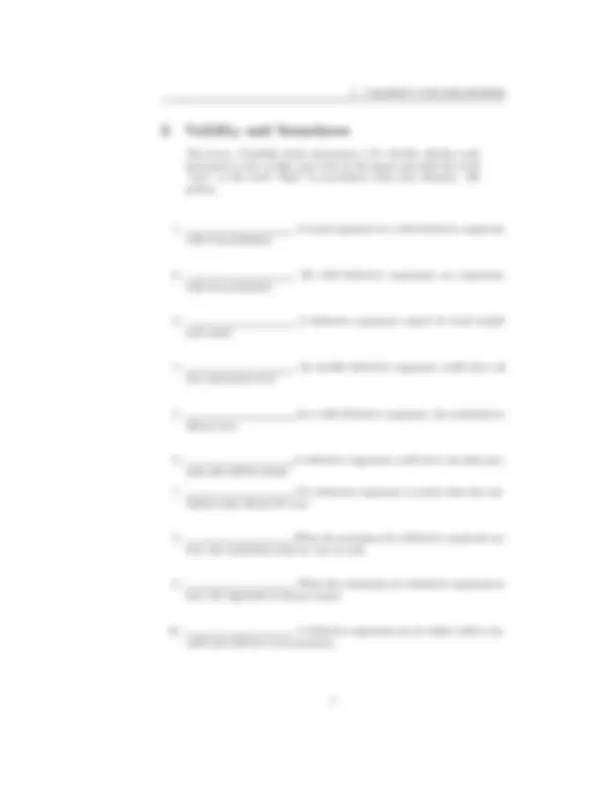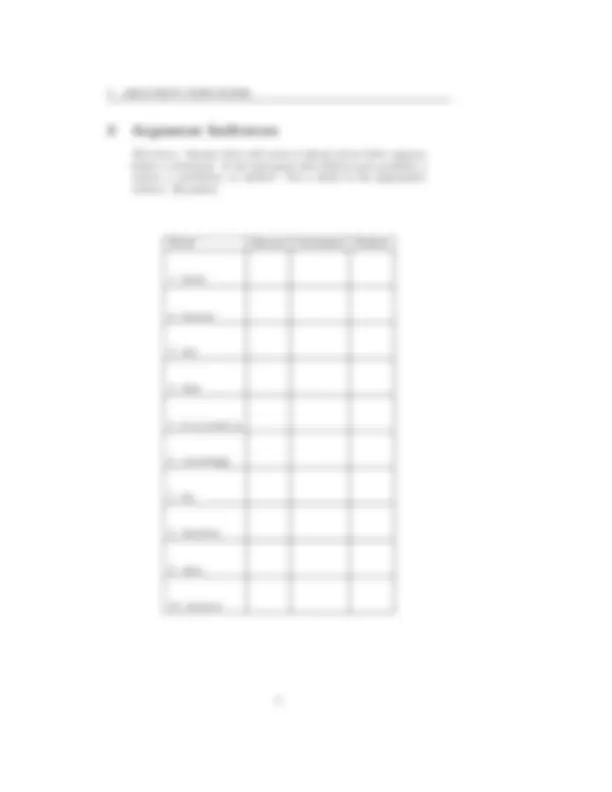





Study with the several resources on Docsity

Earn points by helping other students or get them with a premium plan


Prepare for your exams
Study with the several resources on Docsity

Earn points to download
Earn points by helping other students or get them with a premium plan
Community
Ask the community for help and clear up your study doubts
Discover the best universities in your country according to Docsity users
Free resources
Download our free guides on studying techniques, anxiety management strategies, and thesis advice from Docsity tutors
A portion of a university course material for a philosophy 103 class focusing on introduction to logic. It includes exercises on diagramming arguments and identifying their structures. Ten examples of arguments and asks students to determine if they are arguments, diagram their structures, and evaluate their validity.
Typology: Papers
1 / 6

This page cannot be seen from the preview
Don't miss anything!




Directions: First, indicate whether the passages quoted below are arguments. If a passage is not an argument, explain why it is not. Second, only if the passage is an argument, diagram the structure of the argument by referring to the numbered statements and by using conventional diagramming symbols. (40 points)
Directions: Carefully study statements 1-10. Decide whether each statement is true or false, and write in the spaces provided the word “true” or the word “false” in accordance with your decision. ( points)
Directions: Assume that each word or phrase given below appears before a statement. Is the statement that follows most probably a reason, a conclusion, or neither? Put a check in the appropriate column. (20 points)
Word Reason Conclusion Neither